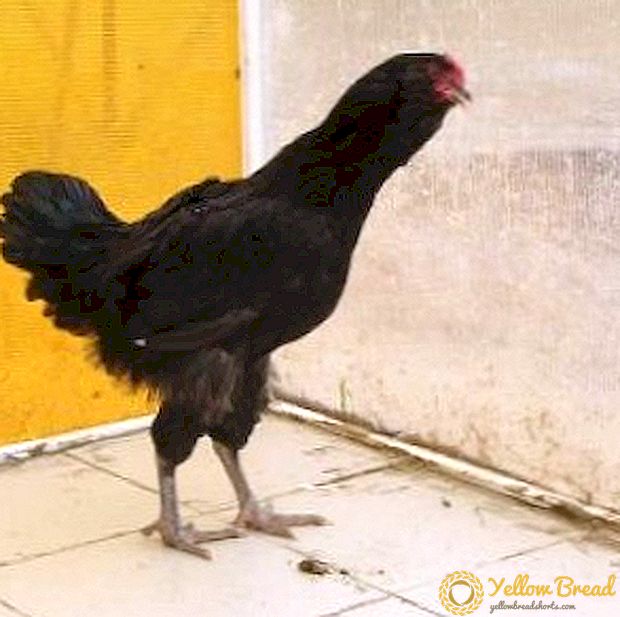Veere Grenney
Veere Grenney, founder of Veere Grenney Associates and VERANDA 2013 Magic Maker thinks a penchant for design is part of your DNA, and loves working with "inspired amateurs." The New Zealand born, London-based designer explains his passion for Tangier, tells us what's really a splurge, and more.
When did you realize you wanted to go into design?
Veere Grenney: For ever and always, it's all I've ever known. Even though, when I was growing up in New Zealand, there was no such thing-there was no one doing it there. Looking at magazines or books on beautiful interiors, I suddenly became conscious of certain people like David Hicks and Billy Baldwin who were enjoying careers making beautiful rooms and beautiful houses. So that's what really triggered it off. For my generation, living in Australasia, there was no clear pattern for the path.
How were you able to figure out that path?
Grenney: Well you don't, you just keep on going in life and you wake up one day and suddenly you are living in Europe, which makes things much easier, and then you meet the people who are on the path, and then off you go.
But I didn't actually sit there in New Zealand thinking, ah this is the way you do it, step one, two, three, and four. I kept on veering towards elements like having an antique shop and working in the antique profession or working in areas relating to that path. Then one day you get the opportunity to actually enter it.
How old were you and where were you when you became an interior designer?
Grenney: All my life I wanted to do what I do, but it took me to the age of 30 to have my first proper grown-up job in interior design and that was with Mary Fox Linton and David Hicks. So my 20's were spent working mainly with antiques or furniture, dealing with and therefore meeting the interior designers that eventually spotted my talent and gave me a job.

Dedham Vale in the English Countryside, one of Grenney's favorite landscapes. Photo Courtesy of Veere Grenney.
Who or what has influenced your work?
Grenney: Sir John Soane and the English Countryside. Soane is one of the greatest architects that England has ever produced. Although he lived in the late 18th and early 19th century, a lot of his detailing is classically based, but still very contemporary, so appropriate for where it is used. You can still use his techniques today in a very modern way.
And the British countryside because I think it is one of the most beautiful visions in the world.
How would you describe your style?
Grenney: Contemporary Classicism-one eye on the past and one on the future. That's the only way to describe it. My style is really reflected in every project I work in. If I am doing a house in Greenwich, Connecticut, or an apartment in Manhattan, or a house in Sweden or London, there may be a thread which passes through everything, but I obviously work with what is appropriate to each place.
How do you successfully mix these two perhaps juxtaposing ideas?
Grenney: What is appropriate for the place comes first. You don't want to use silk taffeta in Mystic, Connecticut and maybe in a country house in England-you want to use linen. And then the beauty that you put with it, the subconscious thing that comes through, that gives the style.
How have your aesthetic choices changed since you began your career?
Grenney: My choices haven't changed. I experience certain elements more strongly depending on the project. For example, if I am working on an English country house, my aesthetic choices differ from those when I am working on a project in Manhattan. However there is always a thread which connects everything. Often, if you look back at things you did 30 years ago, it may not be as mature, or it may not have the understanding that you do now, but I still think it has an element that comes through.
What are you currently working on?
Grenney: A classical house in Greenwich, Connecticut, a townhouse on the Upper East Side of New York, a Swedish manor house on an archipelago about an hour from Stockholm, and numerous London properties including a Grade 1 John Nash house in Regents Park.
What's exciting to you about the house in Greenwich?
Grenney: It's actually a lovely American Federal-style house that was decorated in the 1990's in a very much English country house-way, and we're changing some of the fabrics and furniture to make it a little bit more contemporary. The fabrics and colors that you used in the late 1980's and '90's are probably a little bit different than what you would use now. It has less formality and a slightly more comfortable air about it.
What's inspiring you at the moment?
Grenney: Spending a lot of time in New York and Moroco.
New York always inspires me because it has such amazing buildings and in this city particularly, people take interior decoration very seriously. There's always a great buzz on the street about what is going on, what is hot, and what people are doing.
In Morocco, I am building a house in Tangier. Morocco is a big country and it changes a lot. The desert, Marrakech, and the Atlas Mountains are very different from Morocco in the north, where I am.
Morocco in the north has more of a moderate Mediterranean climate-it doesn't have the winters or summers like Marrakech. It has a high rainfall in the winter, and therefore you can create extraordinary gardens, with more of a European idiom as apposed to a desert garden that you would get in Marrakech.
Tangier faces the Strait of Gibraltar where the Atlantic comes into the Mediterranean and the main axis view is due-north looking at Spain and Portugal. On the west side, it has Atlantic beaches, fantastic for swimming. So the life in Tangier is quite different from the life in Marrakech. You can create a wonderful home and a wonderful garden in a country where you still have extraordinary skilled people to do some very extraordinary work. You have a Mediterranean climate and house with a Moroccan vernacular.
What helps you feel creative?
Grenney: I just think it is something you do every day of your life. It is part of your DNA, it has to be. Because if someone asks you a question about something beautiful-it could be a painting, or furniture, or room or fabric or carpet, or whatever it is-I think you have a very strong opinion very quickly. That is really part of the creative process.
Are there any widely accepted rules that you love to throw out the window?
Grenney: No, as there is a time and place for everything.
Wait-you feel there are no rules?
Grenney: Oh there are huge rules always-because we always have a client or we have ourselves. So the rules are always there and they're usually driven, accepted rules, always to do with the client: where they live, how they live, whether they are young or old, have children, are very social.
Those are the rules which you are given when you are asked to undertake a project. Those are rules which you don't break because that's about people's needs. But with decoration itself, or what you put with what, that can be anything you like.
What are some spaces that have always visually inspired you and continue to stand out for you today?
Grenney: The Chinese Palace at Oranienbaum, west of Saint Petersburg, commissioned by Catherine the Great and designed by Antonio Rinaldi.
I don't think I've ever been anywhere that has had such extraordinary details. They've taken the trouble to build a pleasure palace which was really just for pleasure, and the degree of workmanship and beauty in it is exceptional to the extreme.
I just also love Saint Petersburg and northern European light, and that you bring the Oriental to Saint Petersburg in the 18th century, and you get something unique.
[TOUR A 19TH-CENTURY LONDON APARTMENT DESIGNED BY VEERE GRENNEY]
What qualities do you like to have present in your own residence?
Grenney: Comfort, comfort, comfort. It's my own residence-it's really about making sure that every area works as an area. If something works, it is always going to be comfortable-comfortable on the eye, comfortable physically, just comforting generally.
What kind of private clients are the most fun for you to work with?
Grenney: Inspired amateurs are by far the best clients to work with. In other words, you are working with somebody who loves beauty, knows all about it, loves beautiful things, but hasn't necessarily spent a lifetime finding the workmen to pull it all together. They are the best clients by miles, and the best work always comes out of a very good decorator working with an inspired amateur.
There's a strong collaboration, you mean.
Grenney: Always.
So you prefer to work with an inspired amateur verses someone who says, just do everything?
Grenney: Well that is horrible, I think that is horrible. (laughs) I mean it sounds good, but it's never quite like that. It's very, very nice to have someone with an opinion and someone who says yes or no. An inspired amateur will always make up their mind very quickly and they trust you because they've picked a professional.
What has been one of your favorite projects over the years?
Grenney: An Arts and Crafts Philip Webb house in London. It's a particularly lovely house, and I love Arts and Crafts and hadn't done it for a long time. It's very very nice to do something with such a strong vernacular to it, that you can work through the whole thing.
Can you name any great splurge items you've included in recent projects?

Grenney: A splurge project always has an underground swimming pool (laughs), because they cost way out of all proportion-especially in central London, where you have to always destroy a house to build it in the first place. Then you build the house again! It has fantastic results, but it is something which is way out of the water (laughs) in terms of how much it costs to what you get out of it.
Have you traveled somewhere recently to a place that influenced you?
Grenney: Other than Tangier, I was in Ethiopia last year, and that was mind blowing. Last year I also did a house in Jackson Hole, which isn't a place I ever knew before. I knew Aspen very well-but not Jackson Hole. That part of America-Wyoming, Montana-is truly inspiring.
The landscape, you mean?
Grenney: The landscape is phenomenal and also the buildings, the houses. Not only seeing the architecture that other designers were building, but seeing the natural landscape.
Really, you always find that. I'm doing a project at the moment in Sag Harbor, New York. Well I never used to know Sag Harbor very well, but I think it is just so beautiful. It is actually now my favorite place in the Hamptons, because I love the fact that it feels like you're in Maine, because you've got old houses. It's one of the most charming parts of the Hamptons, bar-none.
What do you do to in your downtime?
Grenney: Walk in the English countryside and travel. I have a beautiful dog-a lurcher, which is an English hunting dog, a mixture of greyhound, whippet and sheepdog-basically a shaggy whippet. I am walking with her in the countryside any time of the year, which for me is as good as it gets.
And I'm always traveling, thank goodness, with our work. It is always a different country. Coming from New Zealand, you are always moving around the world. I had an apartment in Rio de Janeiro, so I spent a lot of time in Brazil. I spent a huge amount of time in India, and then the West Indies through work. One is always moving. I am on an airplane probably every two weeks of my life. Even just landing in New York or coming into Manhattan, suddenly visually your eye changes. Therefore, there is inspiration that always goes before you.






